Islamic State crisis: Coalition weaponry
- Published
British planes are now in action in Syria, after Prime Minister David Cameron won the backing of MPs for air strikes against so-called Islamic State extremists in the country.
The UK has been bombing IS targets in Iraq since September 2014, as part of the US-led coalition.
Here we look at some of the aircraft and weaponry that has been used in the fight against the IS group.

UK AIRCRAFT
Tornado
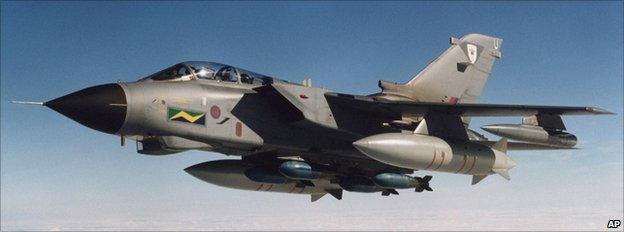
Crew: 2
Max speed: Mach 1.3
Weapon options: DMS and Legacy Brimstone, Storm Shadow, Paveway II, Paveway III, Paveway IV, Mauser 27mm cannon ASRAAM
Source: RAF
The UK has ten Tornado GR-4 jets in Cyprus at the RAF Akrotiri base.
The Tornado has been one of the mainstays of the RAF since first entering service in 1980. It is an all-weather, day or night aircraft, capable of operating at a low-level.
It is primarily a strike or attack aircraft, with an ability to deploy specialised precision-guided munitions, but it also has sophisticated targeting and imaging tools, which have proved very useful for surveillance missions.
Raptor - the Reconnaissance Airborne Pod for Tornado, is a stand-off electro-optical and infrared long-range photography pod, which can create hundreds of images during a single sortie.
The Litening III Laser targeting and reconnaissance pod provides a vital air-to-ground targeting capability.
Tornado jets carried out their first strike mission in Iraq in September 2014 using Paveway IV guided bombs.
The GR4 typically carries up to five Paveway IV smart weapons or two Stormshadow cruise missiles, but it can be configured with various weapons.
The Paveway IV is the most modern and accurate precision-guided munition in the RAF inventory. It carries a smaller warhead than earlier versions of the weapon allowing aircraft to carry more bombs, which the RAF says can be delivered with greater accuracy and less risk of unintended collateral damage.
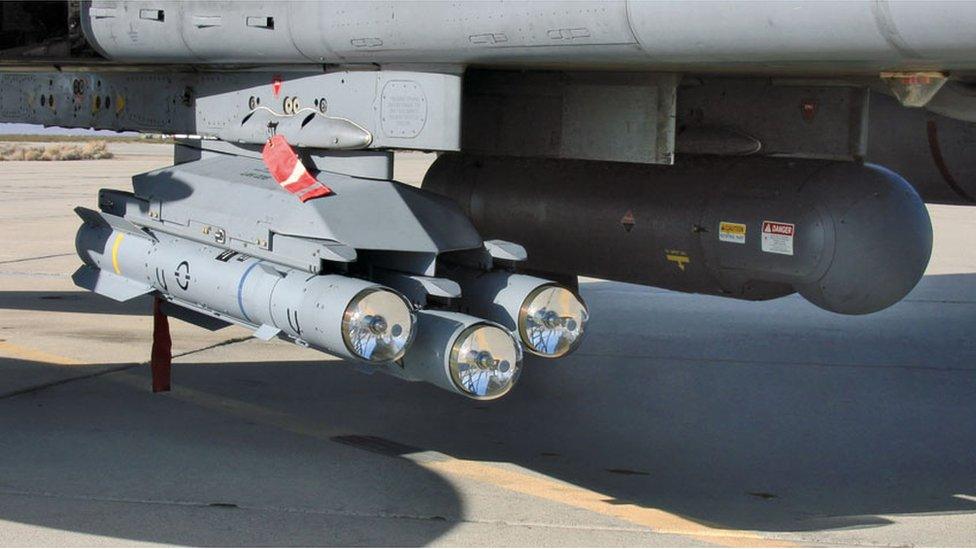
Subsequent missions have also involved dual-mode Brimstone - a highly accurate weapon against vehicles and multiple targets. This is a development of what was originally an anti-armour weapon. Dual-mode Brimstone is both radar and laser-guided.
The MoD said 93 Brimstone missiles - each costing more than £100,000 - were fired in the year to September in military operations in Iraq.
The weapon has what is known as a "fire and forget" capability, which uses a wave radar seeker to lock onto a moving target. It has two warheads, the first smaller warhead is designed to knock out any reactive armour on the target, so the second warhead can penetrate the target before detonating.
Typhoon
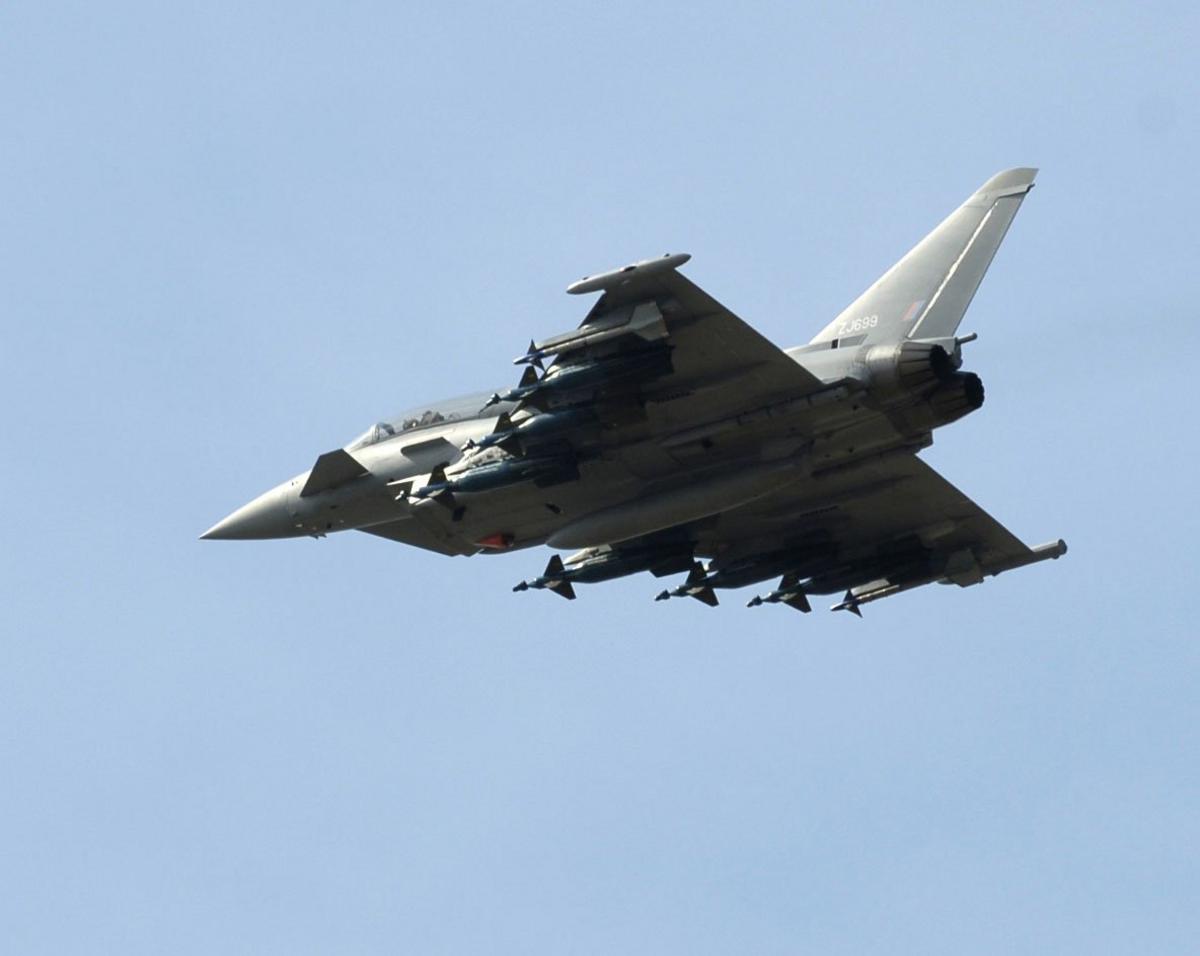
Crew: 1
Max speed: 1.8 Mach
Weapon options: Paveway IV, AMRAAM, ASRAAM, Mauser 27mm Cannon, Enhanced Paveway II
Source: RAF
The RAF has six Typhoon jets at the RAF Akrotiri base in Cyprus.
The Typhoon was originally designed as an air-to-air combat fighter, rather than for ground attacks. After modifications, the jets were upgraded to carry Paveway guided bombs in 2008, but they are not yet capable of carrying the Brimstone missiles.
Rivet Joint surveillance aircraft
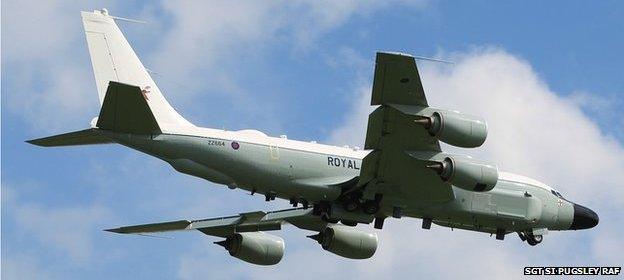
Crew: Up to 30, including two pilots, two navigators and intelligence-gathering specialists.
Speed: 800km/h
Equipment: Automated ELINT Emitter Locating System
The reconnaissance operation in Iraq has been bolstered by one of the Royal Air Force's Boeing RC-135 Rivet Joint aircraft, which has been deployed alongside the Tornados. It has been based at the al-Udeid air base in Qatar.
The RAF took delivery of its first Rivet Joint aircraft in 2013. It is based on a US reconnaissance aircraft, which first came into service in the 1960s.
The Ministry of Defence said the aircraft, flown by 51 Squadron, was helping "build an understanding of the humanitarian situation in northern Iraq and the associated [Islamic State] threat".

Reaper drone
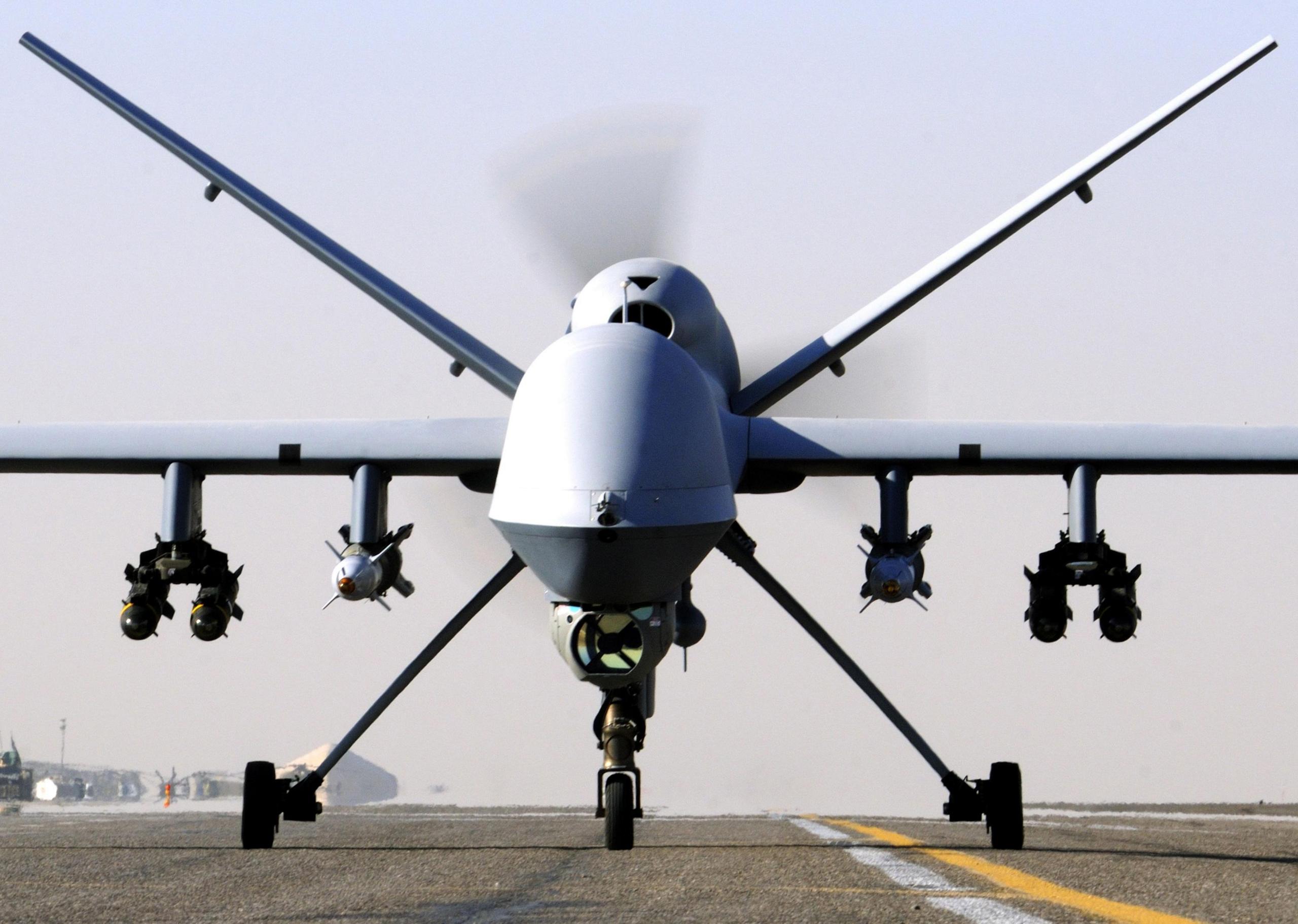
The first Reaper drones were used by the RAF in Afghanistan in October 2007. They are operated by a crew consisting of a pilot, sensor operator and a mission co-ordinator from ground control stations.
Two cameras in the nose of the aircraft provide the crew with the view of what is in front of the drone. A satellite communications system gives the crew control of the aircraft once it has disappeared from view.
Each Reaper is normally armed with two 500lb laser-guided bombs and four Hellfire missiles.
In September, the prime minister announced that an RAF-operated drone had killed two Britons linked to IS in Syria, describing the action as an "act of self defence".
Sentinel spy plane
The Sentinel R1 is the RAF's only long-range battlefield surveillance plane. The aircraft's powerful radar can identify and track numerous targets over great distances.
An on-board team of intelligence analysts help make sense of the data collected by the aircraft, which is passed back to commanders and decision-makers on the ground.
Defence Secretary Michael Fallon said the RAF has carried out more than 30% of all the coalition's Intelligence Surveillance and Reconnaissance missions over Iraq and Syria.
In September 2015 he announced that the UK would continue to provide surveillance aircraft in Iraq and Syria into 2016.

RAF Lockheed C-130 Hercules transport planes
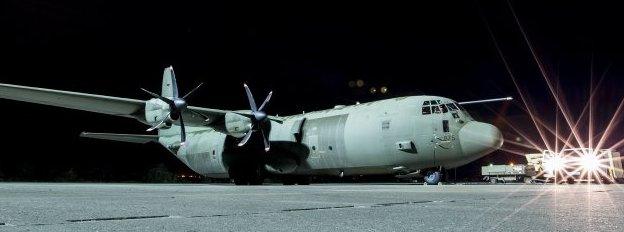
RAF Hercules have been carrying out aid drops
Hercules C-130J C4/C5
Crew: Three
Speed: 590km/h
Max range: 6,500km
Capable of carrying up to 128 passengers or 20 tonnes of freight on pallets, or vehicles. Equipped with radar warning kit and missile approach warning system.
Source: RAF
RAF Lockheed C-130 Hercules transport planes - based at Brize Norton in Oxfordshire - were originally sent to Iraq to drop emergency supplies, including water, food and solar lanterns, to civilians left stranded by the conflict.
But they have also been providing support to British military training teams helping to train Iraqi and Kurdish forces in the region.

Voyager tanker

Crew: 2 pilots, one mission systems operator, eight cabin crew
Maximum range: 5,200 miles fully loaded
Wingspan: 60.3m/198feet
Fuel transfer rate: Up to 1,800 KGS per minute
The Voyager is used for air-to-air refuelling, as well as air transport. It can carry up to 291 personnel, as well as cargo. A single aircraft is capable of refuelling four Tornados and still carry 11,000lb (5,000kg) of freight on a trip across the Atlantic.
It is based on the design of a modern Airbus A330 and can also be adapted to carry up to 40 stretchers and three critical care patients.

US AIRCRAFT
F-22 Raptor

Crew: 1
Speed: Mach 2
Weapons: Air-to-air and air-to-ground missiles
This stealth fighter jet flew its first combat mission against IS in Syria. It carries air-to-ground missiles and guided bombs, capable of hitting precise targets, as well as air-to-air missiles and radar-evading stealth equipment.
It entered active service in 2007, but due to technical problems has not flown any previous combat missions.
The F-22 can operate at high altitudes and is also capable of sustained supersonic flight without using fuel-hungry afterburners.
It is likely the Raptors were used to enter Syrian airspace undetected and send back information about the targets to the ships in The Gulf and Red Sea.
The BBC explains what the F-22 is capable of - in 60 seconds

F-18 Hornet
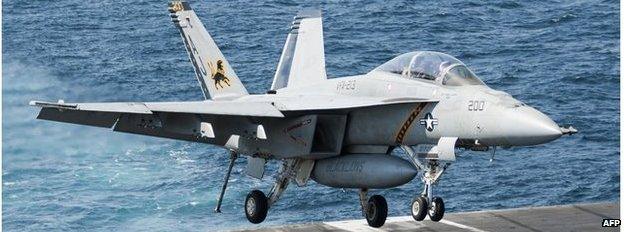
F/A-18F Super Hornet
Crew: 1/2
Max Speed: Mach 1.8
Weapons: Vulcan cannon. Sniper pod. Four AIM-9M Sidewinders - supersonic, heat-seeking air-to-air missiles
Source: Boeing
The US F-18 Hornet, is a multi-role combat aircraft, used for battlefield surveillance and strikes. They have been based on a US aircraft carrier in the Gulf.
In October 2015 the USS Theodore Roosevelt left the region and will be replaced the the USS Harry Truman. The Truman will be accompanied by its carrier strike group, which includes three Arleigh-Burke class destroyers and a cruiser.
In the meantime, US aircraft have been flying out of Incirlik airbase in Turkey and other airbases in the region.
The aircraft is equipped with a sophisticated radar system that can track targets in all weather and from great distances. The Advanced Targeting Forward Looking Infrared (ATFLIR) pod can locate targets by day or night, at ranges greater than 40 miles (65km) and from an altitude of 50,000ft (15,240m).
The newly acquired Joint Helmet Mounted Cueing System (JHMCS) allows the pilot to effectively designate targets in any direction.
The Royal Australian Air Force, external has also deployed F-18 Super Hornets to the Middle East to support the air strikes, along with refuelling tanker and airborne early warning aircraft.

F-16 Fighting Falcon

F-16
Crew: 1-2
Speed: Mach 2
Weapons: Air-to-air and air-to-ground missiles, 20mm cannon
The F-16 Fighting Falcon is a compact, multi-role fighter. It's extremely manoeuvrable, can locate targets in all weather conditions and can fly long distances without refuelling.
F-16s were used in Operation Desert Storm in 1991 and later in Operation Iraqi Freedom and in 2011 in the intervention in Libya.
As well as the US, a number of coalition countries have also sent F-16s. Washington has also agreed to sell 36 F16s to the Iraqis to help them combat IS. The first four jets arrived in July.
EA-18G Growler
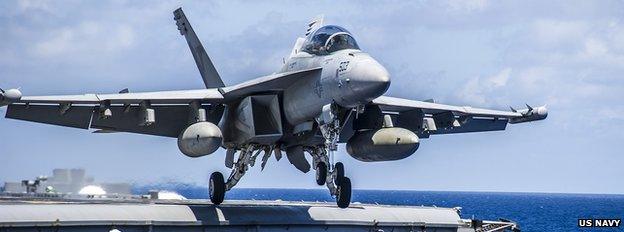
EA-18G Growler
Crew: 2
Max speed: 1.8 Mach
Weapons: AIM-120 air-to-air missiles. Electronic Attack Unit and jamming equipment
The Growler is a high tech version of the F-18 Super Hornet.
It can counter enemy air defences using jamming techniques. The Growler can also be effective as an escort for other attack aircraft.
The aircraft can operate from land or aircraft carriers.

F-15E Strike Eagle
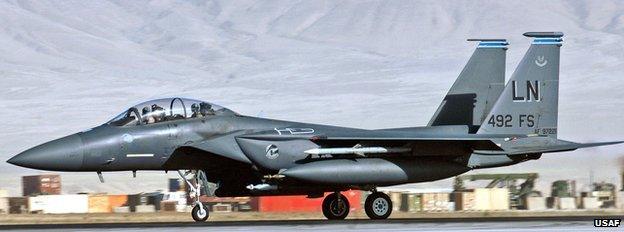
F-15E Strike Eagle
Crew: 2
Speed: Mach 2.5
Weapons: Air-to-ground ordnance includes precision guided munitions and a variety of missiles and bombs. Air-to-air weaponry includes cannon and eight medium and short-range missiles.
Source: Boeing
The F-15E Strike Eagle can perform air-to-air and air-to-ground missions.
The aircraft - used in the strikes against IS - can fly at low altitude, day or night, and in all weather.
The jets are based at al-Udeid in Qatar - along with the US B-1B bombers.

B-1B Lancer
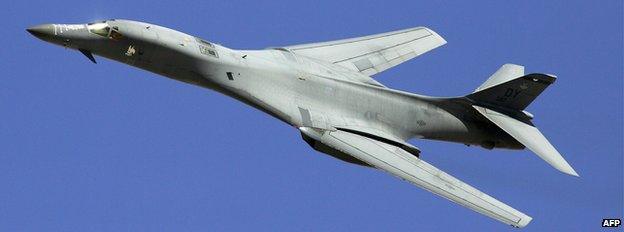
B-1B Lancer
Crew: 4
Speed: 900mph
Weapons include "bunker buster" penetrating bombs, 2000lb general purpose bombs and cluster munitions
The B-1 Lancer is the US Air Force long-range strategic bomber and has been used in the strikes against Islamic State targets in northern Syria.
The bomber can deliver huge quantities of precision and non-precision weapons and can track and target moving vehicles.
Predator drones have been used by the US both for surveillance and strike missions in the region. They are being joined by two Italian Predators, which will be used solely for surveillance.

ALLIED AIRCRAFT
Dassault Rafale
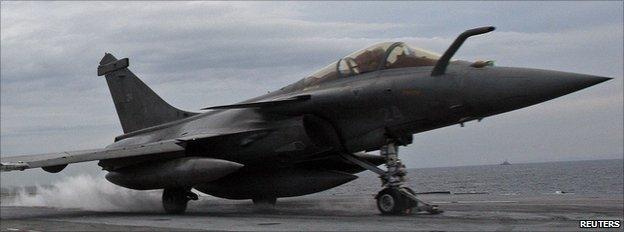
Dassault Rafale
Crew: 1/2
Max Speed: Mach 1.8
Weapons: Air-to-ground missile, including Apache and Exocet, air-to-air missiles and anti-ship missiles
France was the second country to take part in air strikes against IS targets in Iraq and in September 2015 it began air strikes on Syria.
The first French attack was launched on 19 September against an IS depot in the north-east of the country was carried out by Rafale fighters, based at Dhafra near Abu Dhabi in the United Arab Emirates.
The Dassault Rafale is a multi-role, twin-engined delta wing aircraft capable of mounting air defence, ground attack, and reconnaissance missions.
The Rafale is equipped with technology which allows it to detect and track up to eight targets simultaneously and generate 3D maps for navigation and targeting.
France announced on 5 November 2015 it was sending the nuclear-powered aircraft carrier Charles de Gaulle to the Gulf. The carrier has 26 strike aircraft on board, which will add to the 12 French fighters which have been operating from bases in Jordan and UAE.
The carrier was in operation against IS targets in Iraq earlier this year following the Charlie Hebdo attacks in Paris.

Atlantic 2 maritime patrol aircraft
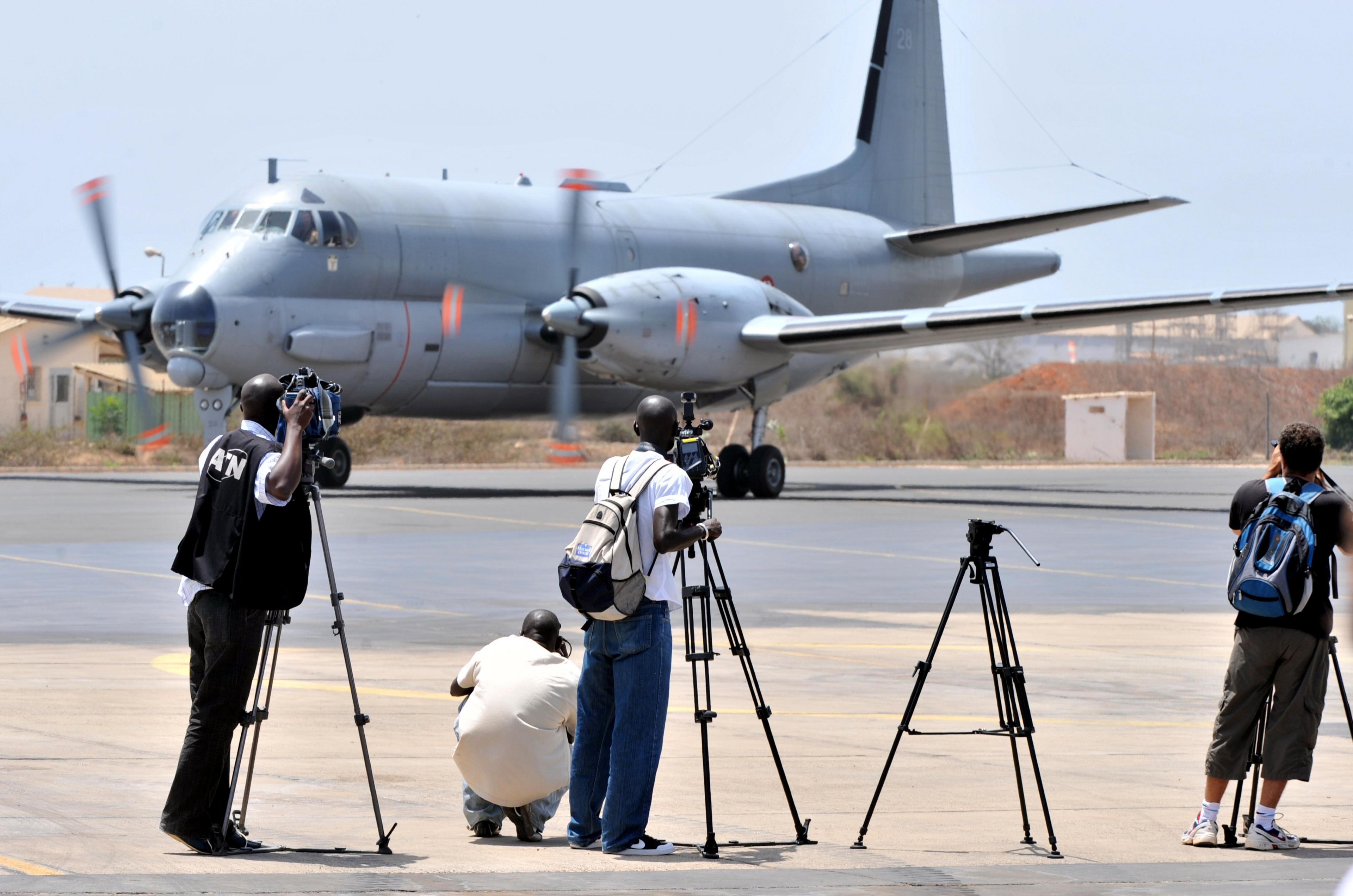
Crew: 12
Maximum range: 18 hours over flight distances of about 8,000km
Weapons: Exocet AM-39 anti-ship missiles, MU90 torpedo and sonobuoys for anit-submarine warefare and Paveway II laser-guided bombs.
France has one long-range maritime patrol aircraft in the region.
The first production model was delivered to the French Navy in 1989. The aircraft are currently being upgraded to extend their operational life into the 2030s.

F-16 Fighting Falcon
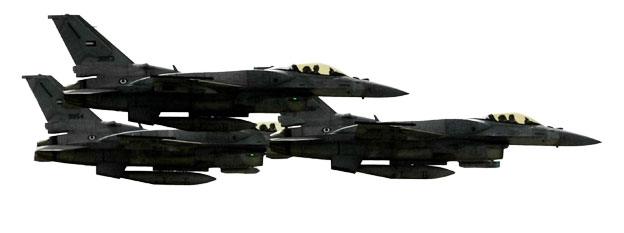
The F-16 Fighting Falcon is favoured by a number of nations who are supporting the US-led strikes.
Jordan, Bahrain, the United Arab Emirates (UAE), the Netherlands, Denmark and Belgium have all deployed F-16s to support the operation. Aircraft from the Arab partners were used in the first wave of attacks against IS in Syria.
Denmark, which is sending seven F-16s, the Netherlands, which is sending six and Belgium, which is also sending six F-16s, say their aircraft will only be used against targets in Iraq - not Syria.
The F-16 is capable of deploying a range of weapons, including air-to-air Sidewinders and air-to-ground Maverick missiles, plus a range of bombs and rockets. It can also carry electronic countermeasure pods to jam radar.
Italy announced in November 2014 that it would send four Tornado jets to carry out reconnaissance flights from Ahmed Al Jaber air force base in Kuwait.
Mirage 2000
Crew: 1
Speed: Mach 2.2
Weapons: Air-to-air and surface-to-air missiles and Mk 82 general purpose bombs
The UAE also has the French Mirage 2000 which has similar capabilities to the F-16.
The multi-role fighter is the descendant of the famous Mirage III of the 1960s - the first European aircraft to exceed Mach 2 in level flight.
The Royal Saudi Air Force is perhaps the strongest Arab strike force in the Gulf. The kingdom has a large fleet of American-built F-15s, as well as the European Tornado strike bomber and the multi-role Typhoon air attack and strike aircraft - which can be used in air-to-air combat, and can also attack targets on the ground.
All these fleets carry a similar mix of Western-made precision guided munitions such as GPS and laser-guided bombs and anti-tank missiles.

Tomahawk cruise missile

Tomahawk missile
Long-range weapon designed to hit strategic targets with minimum collateral damage
Able to deliver 1,000lb (450kg) warhead to a range of about 1,000 miles (1,600km)
Can fly at low or high altitude
Source: Ministry of Defence
The Tomahawk Cruise missile is 20ft (6.1m) long and flies at more than 700 mph for a range of about 1,000 miles, close enough to the ground to take enemy air defences by surprise.
It was originally developed to deliver a nuclear payload, but proved its use in the two Allied wars against Saddam Hussein's Iraq, and against Serbian targets in Bosnia as a means of delivering conventional explosives.
Each missile usually carries a 1,000lb charge, specially shaped to penetrate hardened concrete buildings.
The US fired dozens of Tomahawk missiles during the first wave of strikes against Islamic State militants in Syria on 22 September 2014. The missiles, fired from US ships were used to target the IS stronghold of Raqqa.